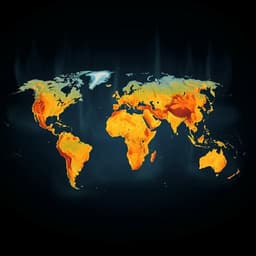
Environmental Studies and Forestry
Global forest fragmentation change from 2000 to 2020
J. Ma, J. Li, et al.
Explore the fascinating trajectory of forest fragmentation globally from 2000 to 2020, revealing unexpected trends and urgent calls for action. This compelling research conducted by Jun Ma, Jiawei Li, Wanben Wu, and Jiajia Liu emphasizes the critical need for enhanced connectivity among forest fragments, especially in tropical regions, to combat deforestation effectively.
Playback language: English
Related Publications
Explore these studies to deepen your understanding of the subject.







